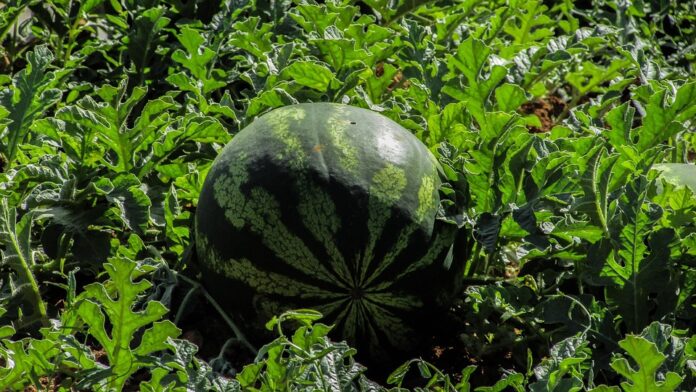Read: The Global Watermelon Industry in 2025 – Market Trends, Challenges, and Future Outlook
Introduction
The global watermelon industry is a vibrant sector within the agricultural market, characterized by its refreshing fruit known for its high water content and nutritional benefits. As we approach 2025, understanding the trends, challenges, and forecasts of this industry is essential for stakeholders, including farmers, distributors, and retailers. This report aims to provide a detailed analysis of the global watermelon market, focusing on its growth trajectory, market dynamics, and future opportunities.
Market Overview
The global watermelon market was valued at approximately USD 5.6 billion in 2020 and is expected to reach USD 8.1 billion by 2025, growing at a Compound Annual Growth Rate (CAGR) of around 7.7%. This growth is driven by increasing consumer demand for healthy snacks, rising awareness of the nutritional benefits of watermelons, and expanding agricultural practices.
Key Market Segments
The watermelon market can be segmented based on type, distribution channel, and region.
Type
The primary types of watermelons include:
1. Seedless Watermelon: Represents about 60% of the total watermelon market due to consumer preference for convenience.
2. Seeded Watermelon: Traditionally popular, accounting for approximately 30% of the market.
3. Mini Watermelon: Gaining traction, particularly in urban areas, making up about 10% of the market.
Distribution Channel
The distribution channels for watermelons include:
1. Supermarkets and Hypermarkets: Contributing around 50% of total sales due to consumer preference for one-stop shopping.
2. Online Retail: Witnessing significant growth, with an expected increase to 15% of total sales by 2025.
3. Traditional Grocery Stores: Still relevant, accounting for about 25% of the market.
4. Others: Including farmer’s markets and direct sales from farms, making up the remaining 10%.
Region
The watermelon market can be categorized into several key regions:
1. North America: The largest market, driven by the United States, which consumes over 60% of the North American watermelon production.
2. Asia-Pacific: Rapidly growing market, particularly in China, which is the largest producer and consumer of watermelons.
3. Europe: Steady demand for organic watermelons is driving growth, particularly in Germany and France.
4. Latin America: Brazil and Mexico are significant players in this region, with increasing export opportunities.
5. Middle East and Africa: Emerging markets with increasing consumption, particularly in South Africa and Egypt.
Market Drivers
Several factors are contributing to the growth of the watermelon industry.
Health Consciousness
With rising health awareness, consumers are increasingly opting for fruits like watermelon that are low in calories and rich in vitamins. Watermelon contains vitamins A, C, and B6, along with essential minerals such as potassium and magnesium, making it an appealing choice for health-conscious individuals.
Increased Agricultural Practices
Advancements in agricultural technology, such as drip irrigation and greenhouse farming, have enhanced watermelon production. These practices enable farmers to produce higher yields and better quality fruits, meeting the growing consumer demand.
Innovative Product Offerings
The introduction of new watermelon varieties, such as mini watermelons and flavored watermelons, is attracting consumers. Food innovators are also incorporating watermelon into various products, including juices, smoothies, and salads.
Market Challenges
Despite its growth potential, the watermelon industry faces several challenges.
Seasonality of Production
Watermelon production is highly seasonal, with the peak season occurring during the summer months. This seasonality can lead to fluctuations in supply and prices, creating challenges for distributors and retailers.
Pest and Disease Management
Watermelons are susceptible to various pests and diseases, such as aphids and powdery mildew. Effective pest management strategies are crucial to ensure healthy crops and minimize losses.
Competition from Other Fruits
The watermelon market faces stiff competition from other fruit categories, particularly tropical fruits like mangoes and berries. This competition can impact market share and pricing strategies.
Market Trends
Several trends are shaping the future of the watermelon industry.
Sustainability Practices
There is a growing emphasis on sustainable farming practices, with consumers increasingly seeking products that are environmentally friendly. Farmers are adopting organic farming methods and reducing pesticide use to appeal to this market segment.
Technology Integration
The integration of technology in agriculture is transforming watermelon production. Precision farming techniques, including satellite imagery and soil moisture sensors, are helping farmers optimize their yields and resource use.
Increased Export Opportunities
Emerging markets, particularly in Asia and Africa, are creating new export opportunities for watermelon producers. Countries like the United States and Mexico are expanding their export markets, particularly to Asia-Pacific regions.
Future Outlook
The global watermelon industry is poised for significant growth in the coming years.
Market Projections
By 2025, the global watermelon market is projected to reach USD 8.1 billion, with North America and Asia-Pacific being the primary growth drivers. The CAGR of 7.7% reflects the increasing demand for healthy and refreshing snacks.
Investment Opportunities
Investors are increasingly interested in the watermelon industry due to its growth potential. Opportunities exist in areas such as organic farming, value-added products, and technology-driven agricultural practices.
Consumer Preferences
As consumer preferences continue to evolve, there is a growing demand for convenience products, such as pre-cut watermelon and ready-to-eat snacks. This trend will likely drive innovations in packaging and product offerings.
Conclusion
The global watermelon industry is on the brink of a significant transformation as it adapts to changing consumer preferences and market dynamics. With a projected market value of USD 8.1 billion by 2025, stakeholders must navigate challenges while leveraging opportunities for sustainable growth. By focusing on health trends, innovative practices, and expanding market reach, the watermelon industry can thrive in the coming years.
References
1. Global Watermelon Market Report, 2020
2. Food and Agriculture Organization (FAO) Statistics
3. Market Research Future Analysis on Watermelon Industry
4. USDA Economic Research Service (ERS) Reports
5. Industry Insights from Agribusiness Experts
This report provides a comprehensive analysis of the global watermelon industry, offering insights into market trends, challenges, and forecasts. Stakeholders are encouraged to consider the outlined opportunities and adapt their strategies accordingly to capitalize on the growth potential of this refreshing fruit market.




